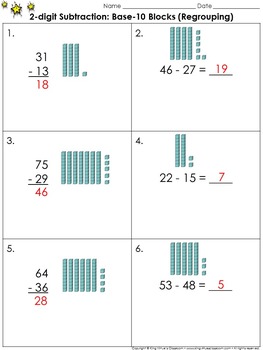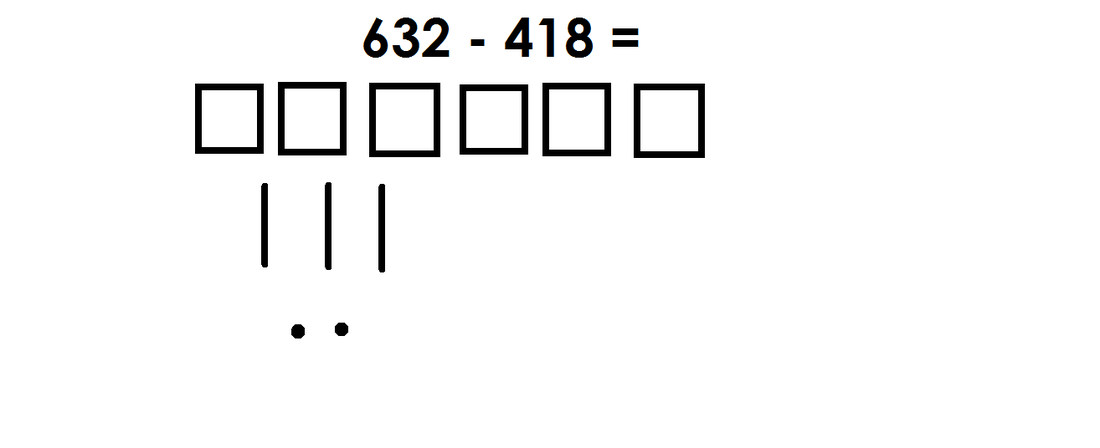

Until this point, we have been using Dienes to represent the same numbers every time. Dienes for decimalsĭienes can also be used to help pupils to visualise decimals. In a similar fashion, Dienes blocks can be used to teach subtraction too, both as a stand alone resource to complete calculations and alongside column subtraction.Īgain, once pupils are comfortable subtracting without regrouping and exchanging, they can then exchange larger Dienes blocks for ten of the smaller ones in order to be able to complete subtraction calculations with regrouping and exchanging. This is where being able to represent numbers in more than one way becomes useful.
BASE TEN BLOCKS SUBTRACTION HOW TO
Having learnt column addition without regrouping, pupils can also use Dienes to understand how to cross the tens line. Once pupils are comfortable using Dienes to show the place value of numbers and manipulate these to create different representations, they can begin to use them to calculate.Īn advantage of Dienes over resources such as number lines or counting materials is that they can be used for three- and four-digit numbers without becoming confusing or time consuming for pupils to count.ĭienes can be used alongside a written calculation in column addition to show how the calculation would be set out and to help pupils visualise the numbers that they are working with, as shown below.Īs long as pupils understand which Dienes represent hundreds, tens and ones, it is as easy as counting in multiples of that number. Read more: What Is A Rekenrek? and 100 Square Activities For Primary School Dienes for addition Pupils may initially disagree that they are the same as there are a different number of tens, however understanding that these representations are two different ways of showing the same number will help with addition and subtraction later on. In this example, a) shows 3 tens and 2 ones which is 32 and b) shows 2 tens and 12 ones which is also 32. You could stretch pupils further by asking, ‘Do these two representations show the same number?’ Dienes can help pupils to visualise the numbers that they are working with.įor example, Year 2 pupils can use Dienes blocks to represent a two-digit number and explain how many tens and ones in a given number. Every academic year usually begins with pupils revisiting place value in the spiral curriculum.

It is fundamental that children understand place value to access the rest of the mathematics curriculum. They have become a staple teaching resource in many mathematics classrooms across the country to enable pupils to master the curriculum. How are Dienes used in maths?Īs they are so versatile, Dienes blocks can be used to enhance pupils’ understanding and reasoning. He is credited with inventing the base ten block.
BASE TEN BLOCKS SUBTRACTION FREE
In our one to one tuition, we use pictorial representations of Dienes to support pupils, as in this column subtraction example.ĭownload Free Now! Why are they called Dienes?ĭienes are named after a Hungarian mathematician Zoltán Pál Dienes who famously theorised that the best way for children, from Early Years and beyond, to learn maths is through games, songs and dance to make it more appealing and memorable. They can quickly and neatly draw Dienes to either help them calculate answers or to prove their work.

They are usually used to represent 1000, 100, 10 and 1. Dienes are coloured plastic or wooden blocks that are used to represent numbers.


 0 kommentar(er)
0 kommentar(er)
